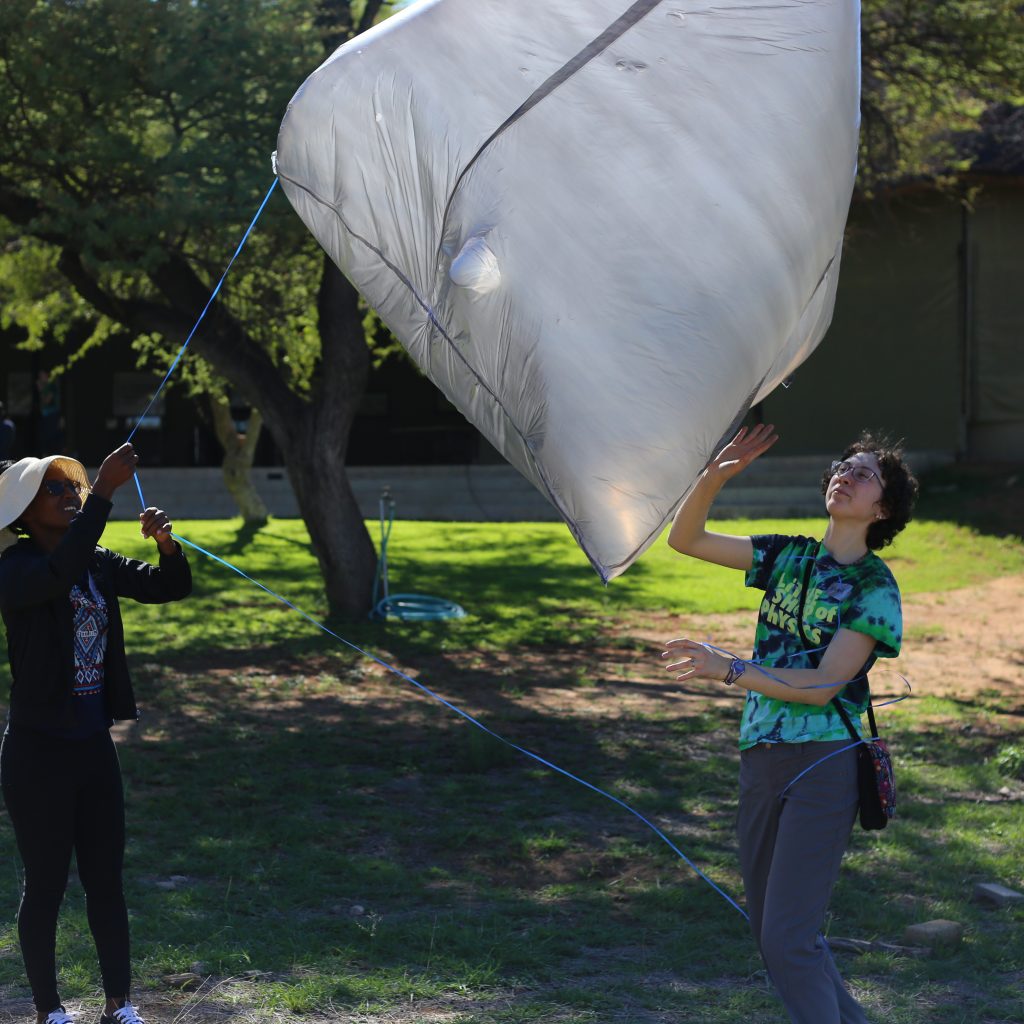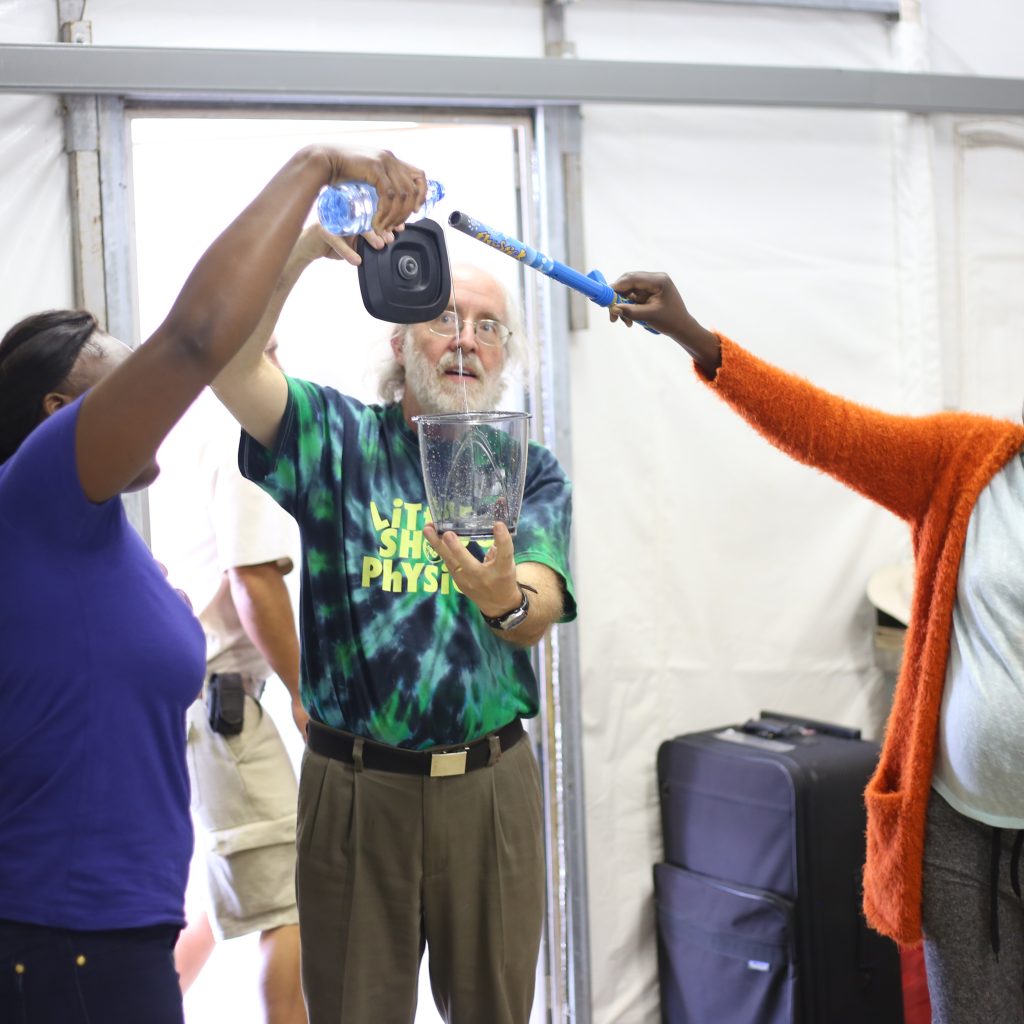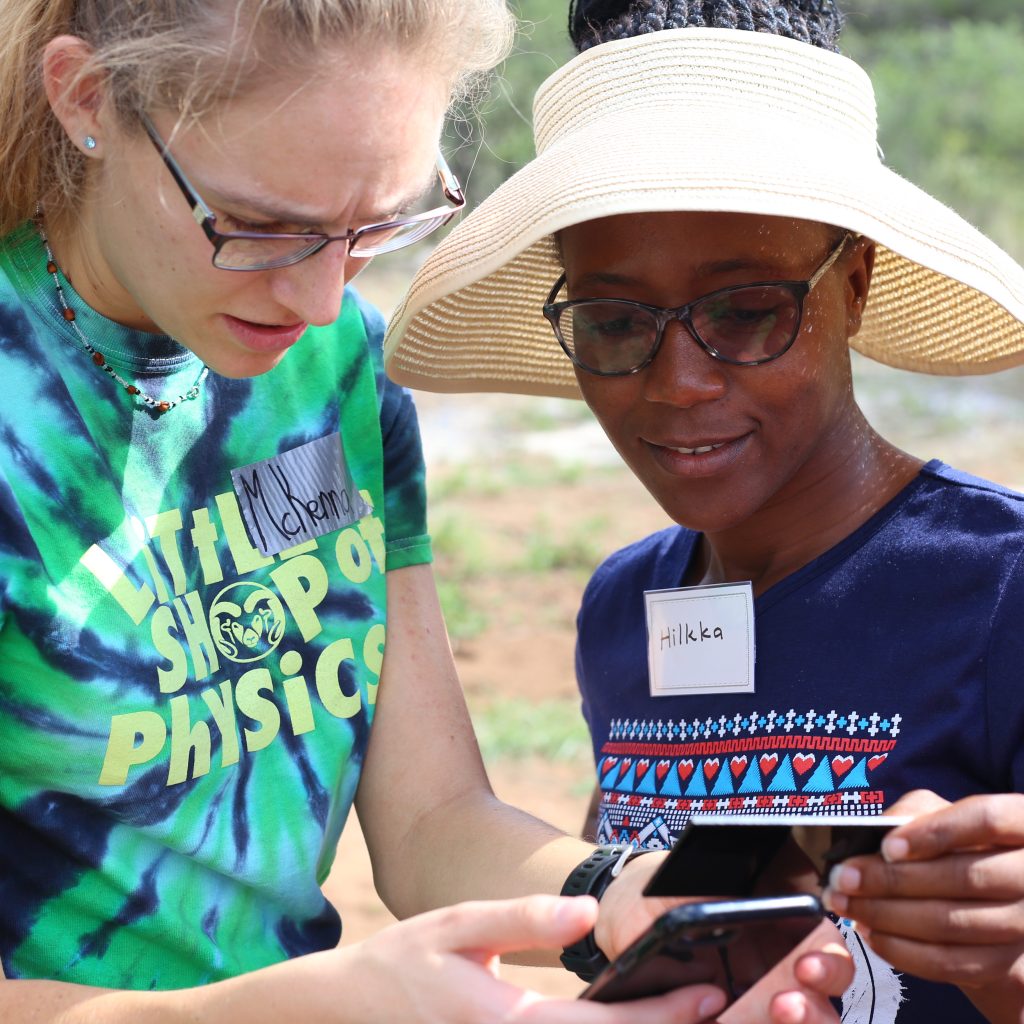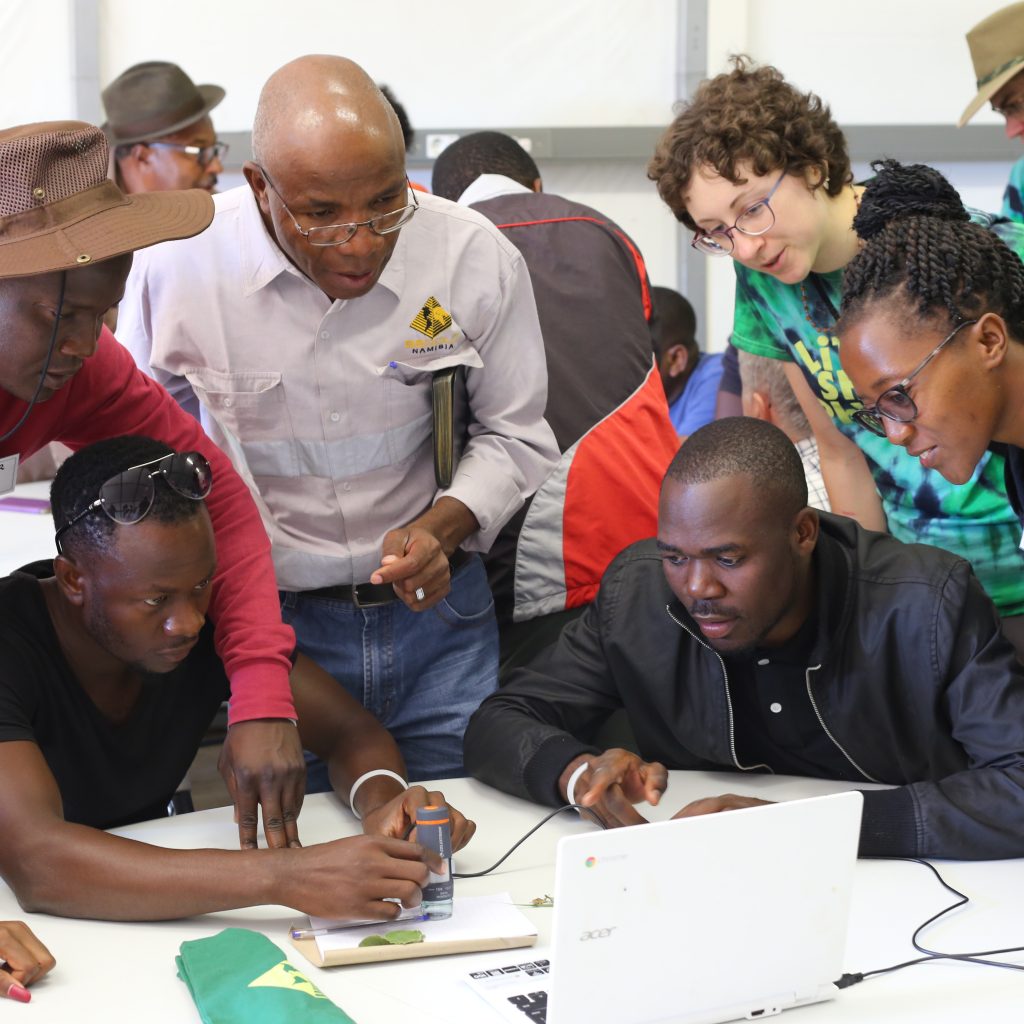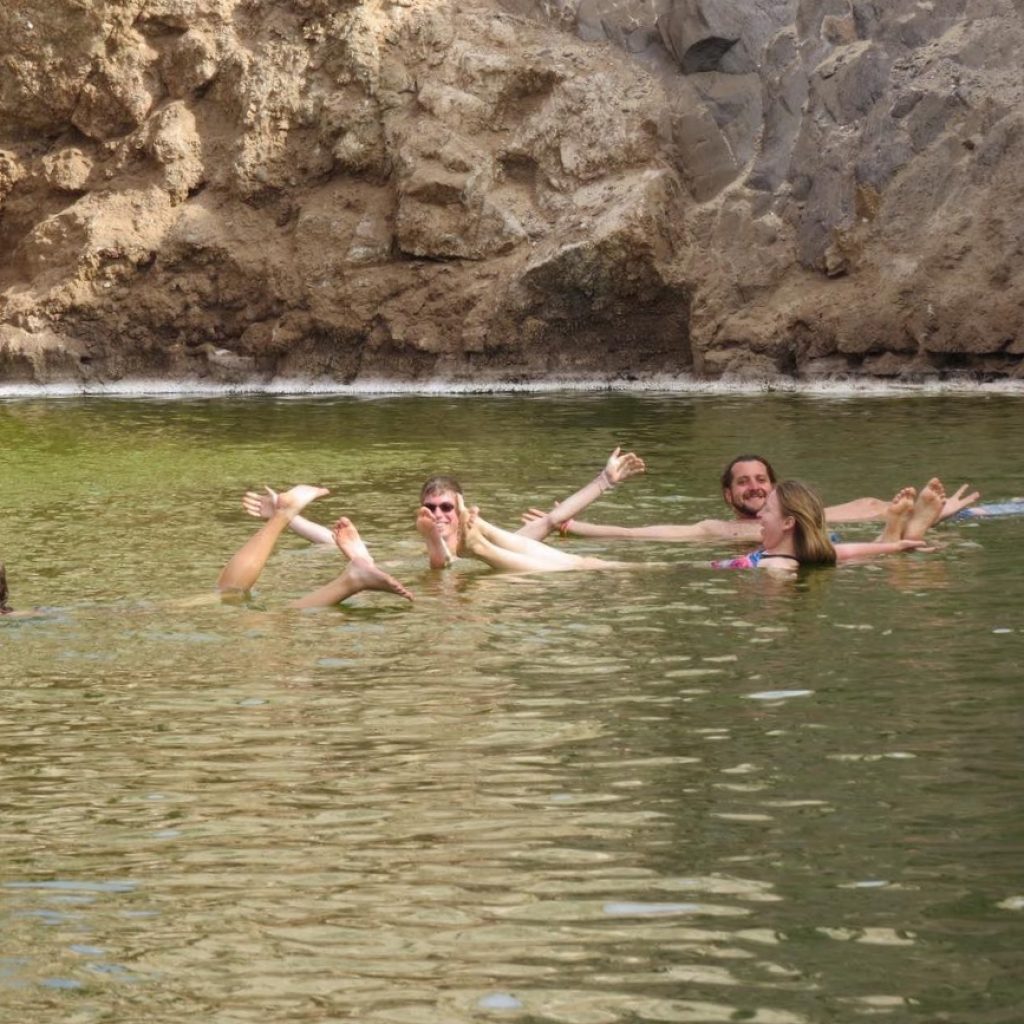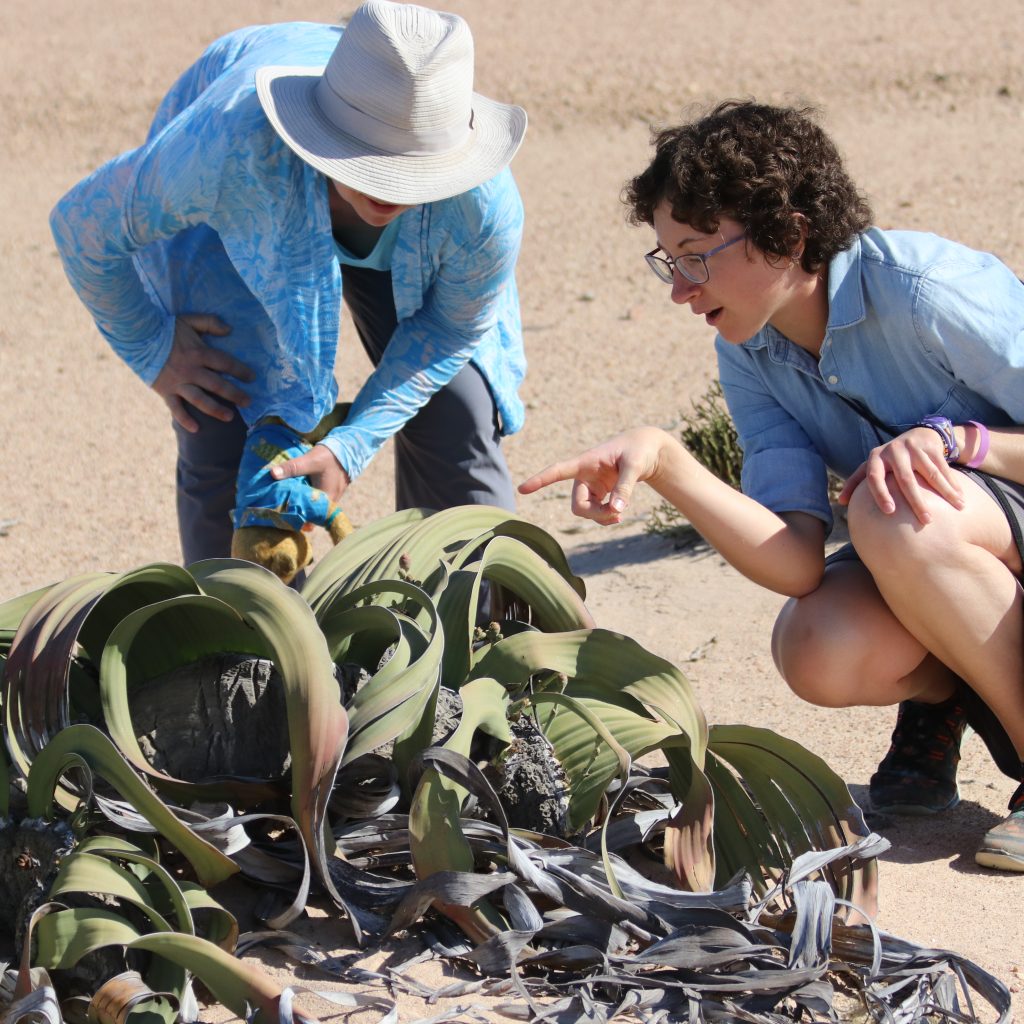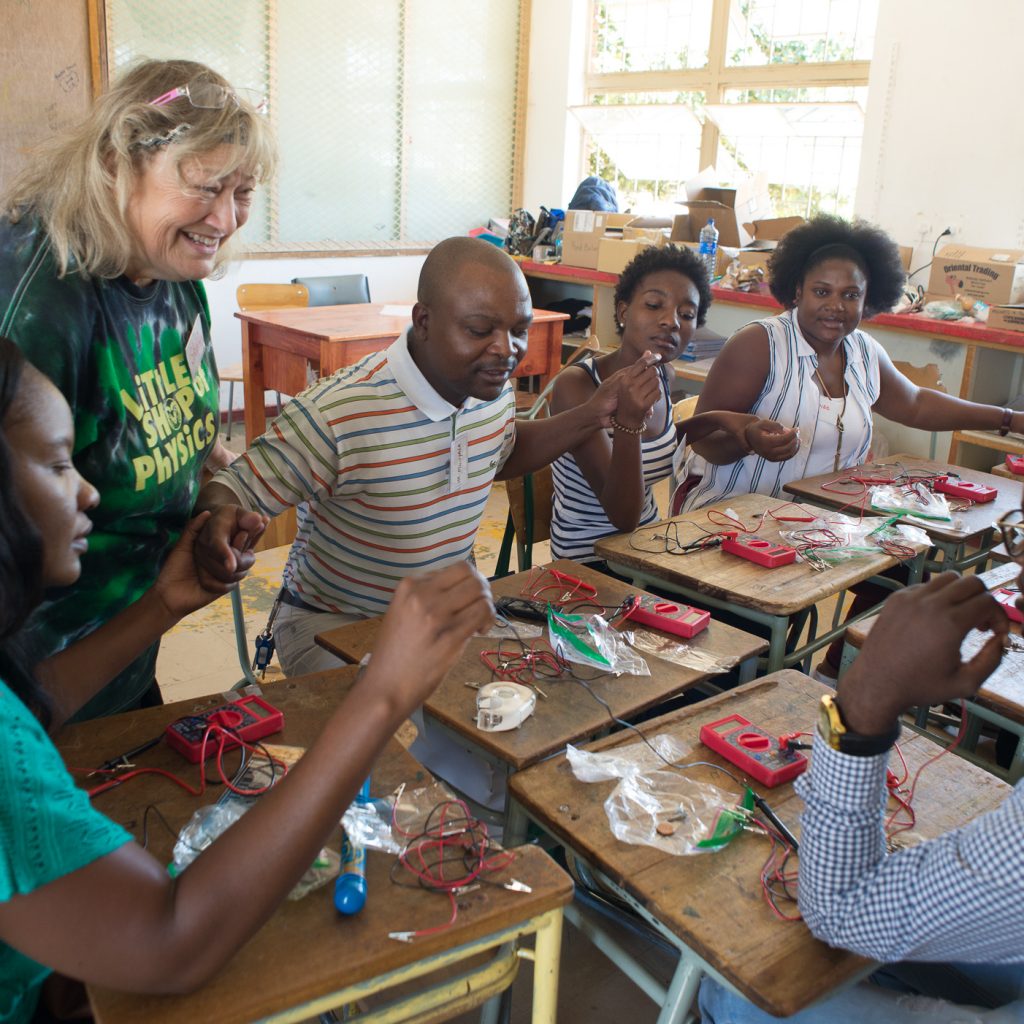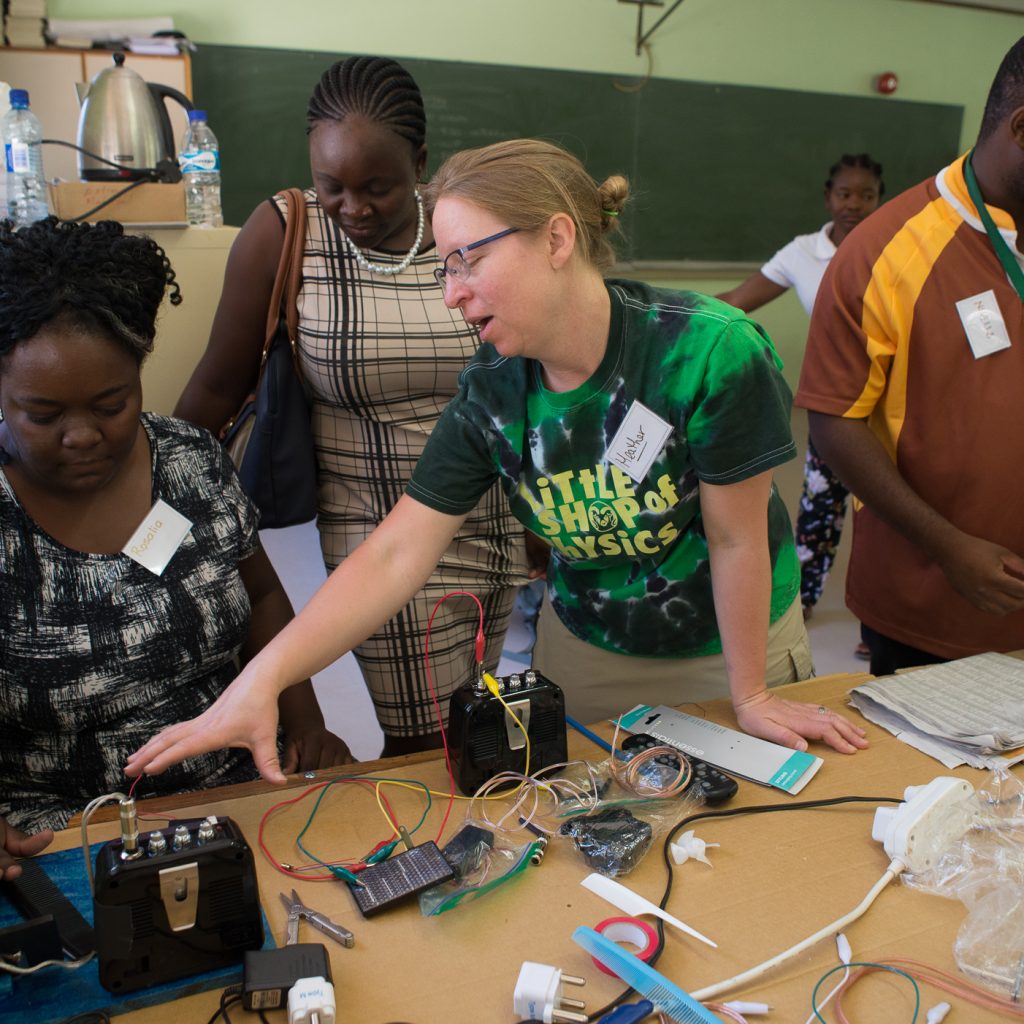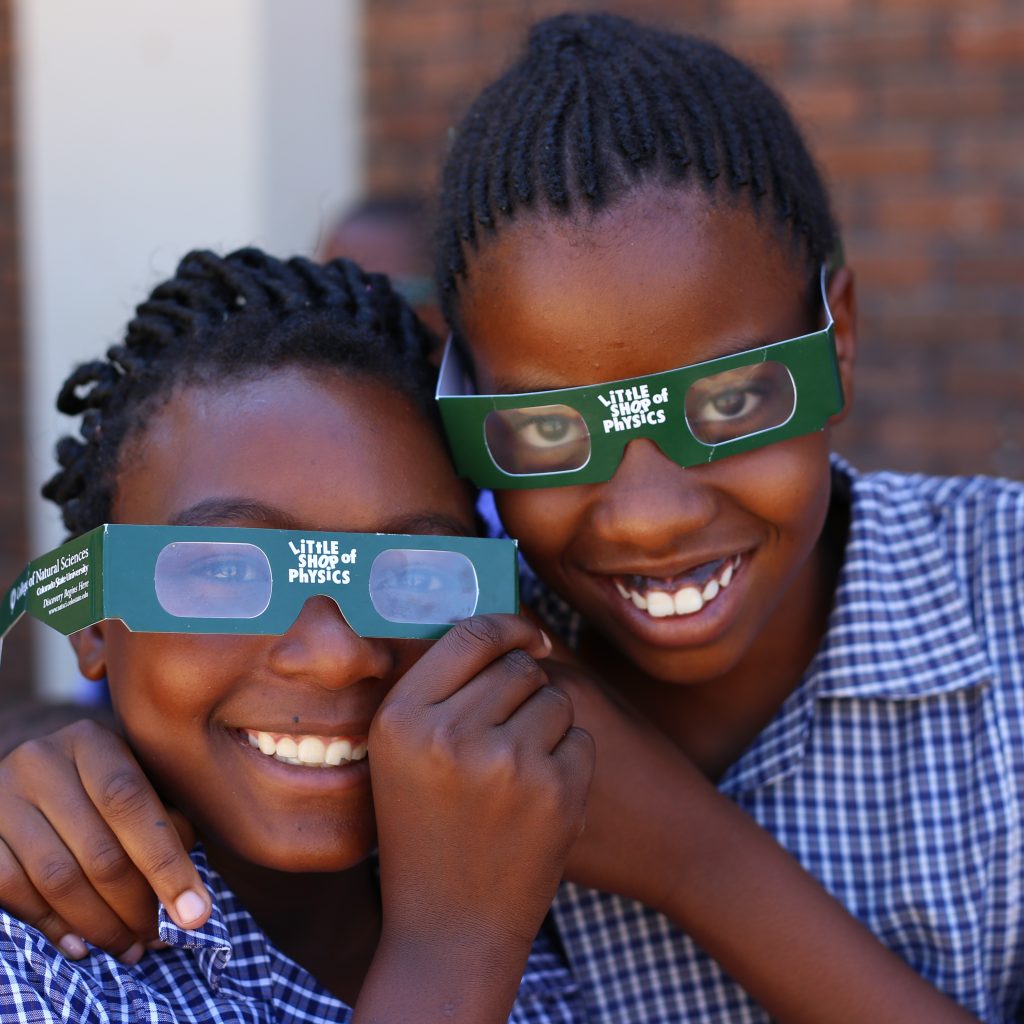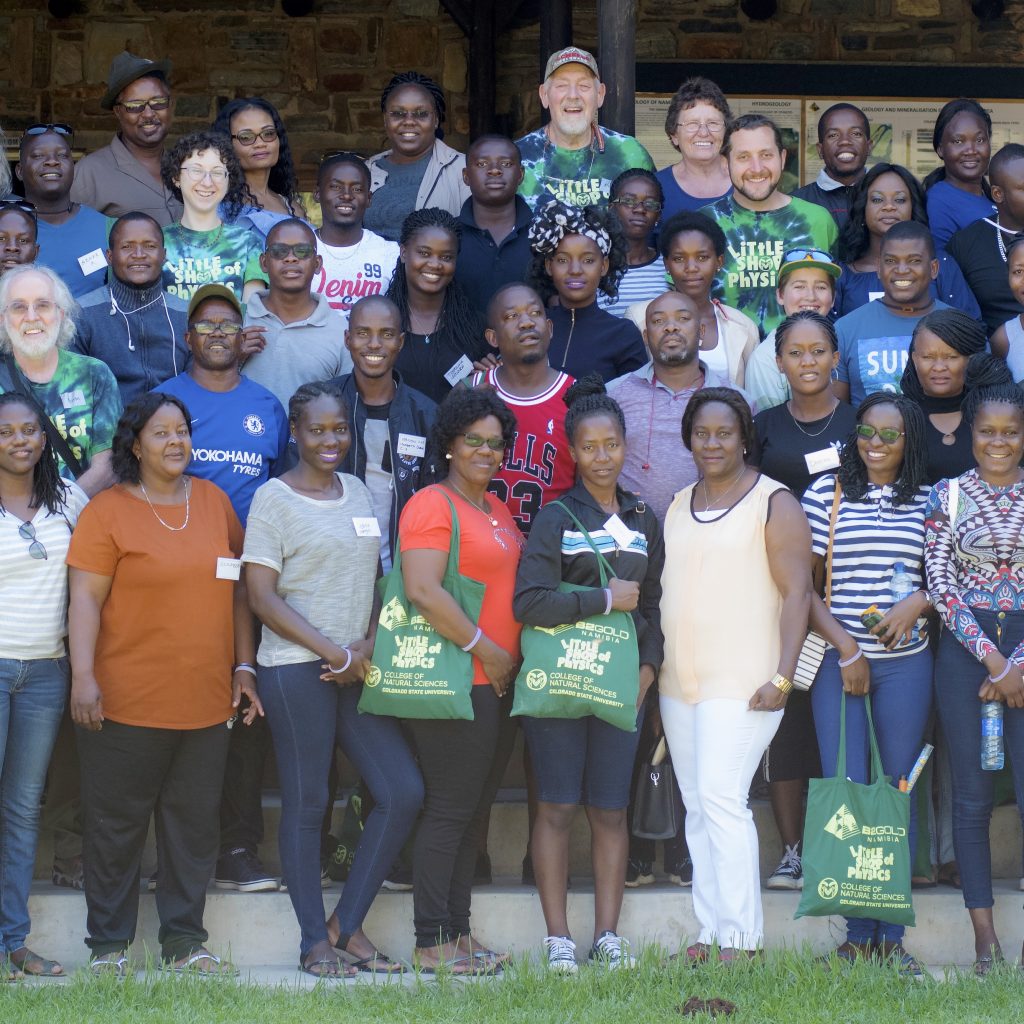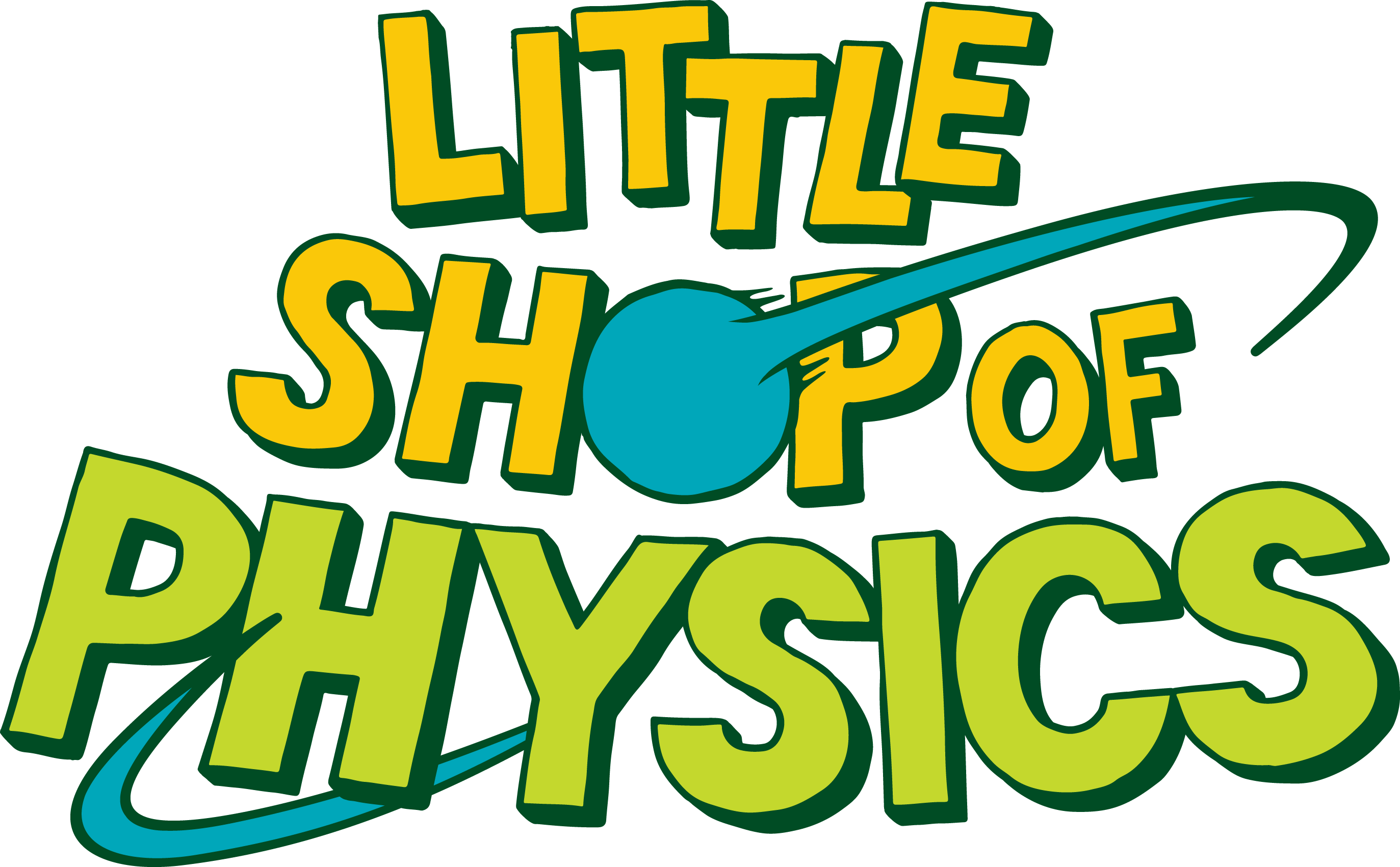Namibia Road Trip, January 2018
The Little Shop of Physics crew spent the first two weeks of 2018 doing what we love: sharing fun, hands-on science education, making new friends, having epic adventures, and trying not to get our solar hot air balloons stuck in acacia trees. Little Shop teamed up with B2Gold for a road trip to Namibia over CSU’s winter break, and we came back with lots of ideas and some great stories to share with you!
Trying not to get a solar hot air balloon stuck in an acacia tree. These hot air balloons are constructed from materials easily available in Namibia (garbage bags and tape). The finished product offers a fun, hands-on experience with the changing properties of a gas across a range of temperatures, but the construction process itself is equally valuable for its capacity to foster excitement and team building.
Week 1: Otjikoto Education Center
After celebrating the arrival of 2018 some 3,000m above the surface of the Earth, we landed in Windhoek on Monday, January 1. We reunited with our friend Sherri Lytle, Corporate Social Responsibility Consultant for B2Gold Namibia, and headed north to B2Gold’s Otjikoto Environmental Reserve. The next day we started getting acquainted with 49 teachers and school administrators from across Namibia during an afternoon workshop on magnetism. Wednesday started as every Wednesday should — with some fun and intriguing experiments with electricity. We wrapped up the day by getting some hands-on experience with the basic principles of energy (i.e., playing with cool energy toys).
On Thursday morning we bonded over a solar hot air balloon challenge, and the rest of the awesome states of matter workshop. It was a hard act to follow, but our afternoon experiments with the rainbow and beyond were up to the challenge. In the evening we came together outside the teaching labs for a game drive and a braai (barbecue). Members of the Otjikoto Mine management team joined us for one last round of investigation, this time with microscopes, and a certificate ceremony on Friday morning. Afterward we parted ways; the teachers returned to their schools for the start of classes the following week, and we struck out for the coast.
Examining a photo taken through an infrared filter over a cell phone camera. Under Namibian education standards, students need to develop an understanding of the physics of light and color. Each teacher attending the workshops received one of the aforementioned infrared filters to help them take their classroom explorations of light and color beyond the rainbow!
Using a USB microscope to examine samples collected from the natural world. Microscopes can help students explore and understand topics across the natural sciences, but are often difficult to acquire and maintain. Each teacher at the workshops received a high-magnification, cost-effective field microscope to use with their students.
Weekend at the coast: Swakopmund
We took off on Friday afternoon for some relaxation and adventure by the Atlantic Ocean. After climbing giant sand dunes, doing a fascinating buoyancy experiment with our friend Dr. Erica Maass (Director of Academic Affairs at the University of Namibia) in the (very salty) “Dead Sea,” and checking out some living fossils (Welwitschia mirabilis) in the Namib Desert, we were ready to get back to work!
Feeling very floaty in Namibia’s “Dead Sea.” Our friend Dr. Erica Maass, Director of Academic Affairs at the University of Namibia, kindly introduced us to this awesome buoyancy experiment. The high salt content of the water increases its density relative to fresh water, so objects (including the LSOP crew) experience a buoyant force equal to their weight force when submerged to a noticeably lesser degree than in fresh water.
Examining Welwitschia mirabilis in the Namib Desert, as enthusiastically suggested by Erica. This gymnosperm gets its water largely from fog and makes only two true leaves over its entire lifespan, which can be 1,000 years or more! (The appearance of many leaves is due to shredding of the two true leaves.)
Week 2: Dawid Bezuidenhout High School
Our second week in Namibia opened our minds (shout-out to the University of Namibia!) and our hearts. Erica donned her Little Shop tie-dye and brought her energy and enthusiasm as seven teachers and 27 University of Namibia student teachers joined us at Dawid Bezuidenhout High School in Windhoek. We jumped right into the Week 1 workshops redux, with a twist: every participant had the opportunity to work with someone on the LSOP team to build a hands-on experiment. The days were busy, but we had a ton of fun and learned a lot by combining workshops and shop work, and we made some good friends along the way. After two and a half days, we had 32 awesome new projects, and we didn’t waste any time putting them to good use.
Over the course of Friday morning we welcomed roughly 1,500 students from across Windhoek to Super Science Day at Dawid Bezuidenhout High School. The students experimented with about 60 hands-on projects — those built during the workshop plus a set borrowed from the Otjikoto Education Center — and some also got to work with giant parachutes, elastic wave bands, and microscopes. Every student left with a gift from B2Gold and Little Shop: a bag of science toys for further exploration. It was a true joy to see the school hall filled with so much curiosity, excitement, wonder, and laughter! Super Science Day was so big, we got to talk to some members of the press — check out the great stories in New Era and the Namibia Economist. You can see some scenes from the day and hear commentary Mark Dawe, director of the Otjikoto Mine and friend of Little Shop, and our own Brian Jones in this excellent video by One Africa Television.
Sharing the love and the rainbows at Super Science Day. These students are wearing diffraction grating lenses (“rainbow glasses”) that produce a spectrum of the constituent wavelengths in a light source. Every student who came to Super Science Day received — along with lots of informal hands-on science learning — a bag of science toys to keep experimenting with as a gift from B2Gold and LSOP!
We want to say a heartfelt thank you to all the teachers, school administrators, and student teachers who joined us for the workshops — you taught us so much, and made us feel welcome and at home thousands of miles from our home. And of course, we are tremendously grateful to Sherri, Mark, and B2Gold Namibia for making this amazing journey a reality. We’re already excited for the next one!
Group photo on the last day of the Otjikoto workshop. Those awesome glow-in-the-dark printed bags the teachers are holding filled up over the course of the workshop with lots of materials for hands-on learning and classroom demonstrations!
For more photos, please visit our gallery for this trip!


